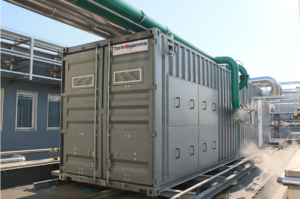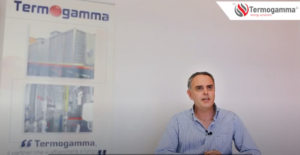Optimal conditions for the implementation of cogeneration
Introduction:
Before buying a cogeneration system the steps on which you should pay attention are different and are fundamental for the achievement of the objectives that these machines are intended to solve, such as, for example, economic savings, the continuity of the service, and the reduced environmental impact.
At the time of the proposal of cogeneration, the energy profile of the user takes on importance first, after the choice of technology, and finally the sizing of the plant.
A CHP system underpins a complex system and the cost-effectiveness is strongly dependent on the energy profile of the end-user.
The privileged users for cogeneration are those characterized by a fairly constant demand over time of thermal and electrical energy to make the most of machines that are designed to work 24/24 365 days a year (except for useful stop periods for the maintenance phase). Usually, good results are obtained by exploiting these machines for 7000-8000 thousand hours a year.
The excess of availability:
Producing electricity and heat simultaneously leads, in the case of lower demands of one of the two carriers, to an excess of availability of the other.
- Excess electricity availability:
- sales to the grid at a price of kWh lower than the cost of production;
- accumulation in the network to be recovered at the appropriate time, in the adjustment should be recognized a charge for the service enjoyed.
- Excess availability of thermal energy:
- released into the environment. If this method is extended for significant periods, it would confirm the overcapacity of the thermal section of the cogenerator (greater investment with direct influence on the economic balance);
- thermal storage. Increases the flexibility of the system but entails an economic burden. Most cogeneration plants do not provide a large thermal accumulation.
Connection of the cogeneration plant:
IHow a cogenerator is connected to an electrical system can start with the following modes:
- Island operation: when the cogenerator is not connected to a public network, that is, it feeds the users separately.
- Operation in parallel with the public network: when the cogenerator is connected to a public network both for functional reasons and to complement its production, that is, it is connected in parallel with the public network.
- Mixed operation: When the CHP normally operates in parallel with the public or island network. In this way, the cogenerator is generally used for the emergency service during periods when the public network is absent.
The connection is always subject to technical feasibility and is carried out, or by those who provide the sales service of the system, or by the distributor, with which regulation must be stipulated.
Depending on the type of plant where the cogeneration group is inserted and the needs of the client, different operating systems are possible, each of which can be implemented with a different configuration of the automation of the electric control panel, which also integrates the necessary CHP protection systems.
The best way of not dissipating any type of thermal energy is to connect to the traditional boiler system which the building already has, in such a way as to activate it only at times when the request cannot be supported by the sole use of the cogeneration system.
In periods when there is no peak demand, compared to the average, the boiler will be inactive and users will enjoy the heat recovered free of charge from the cogeneration plant.
The logics expressed so far are functional when an accurate sizing analysis is carried out by the company providing this service: It is precisely for this reason that this type of technology requires careful attention to the preliminary feasibility study and is ill-suited to standard solutions already predefined.
Afterwards, the feasibility study will be surveyed by specialized technicians to decide where to physically place the cogenerator: there are both indoor and outdoor solutions that give this phase a certain flexibility.
In any case, the cogeneration plant, as a golden rule, is to be installed not far from the user, connected to the electrical panels and to the existing thermal piping of each facility to provide the energy necessary for the operation of the structure.
PWhy Termogamma is available:
Because Termogamma is a true tailor of energy solutions, a company that puts forward people and the care of the empathic aspect of every relationship to the mere sale. In 35 years of development it has always highlighted and tried to develop to a greater extent the phases that distinguish it from other players in the industry, such as listening to the real needs of the customer, total flexibility on the solutions offered and maintenance service designed to generate long-lasting relationships based on trust.
Due to the company’s size Termogamma can truly follow the customer through his doubts, offering in conclusion a unique solution and designed specifically for its industrial reality.
Termogamma takes care of every aspect and stage of the journey that a customer takes after the desire to embrace a green policy. It therefore ranges from the genesis of the intentional idea of installing a cogeneration plant to the treatment of the latter until the death of the cogeneration solution.


